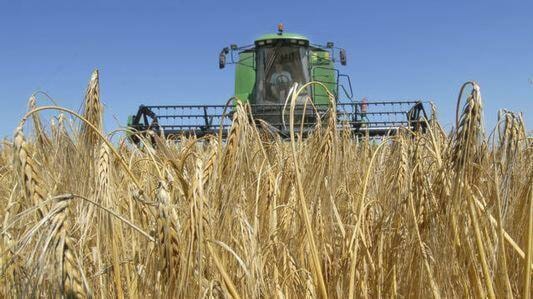By Bonnie White, with contributions from Joanne Galius of Full Circle Farm
Looks like Spring has finally sprung! I would like to expand on my last article about earth friendly gardening to talk about how these practices translate to larger, more commercial farm settings. In total, about 95 per cent of our food comes from the soil. As of 2014, according to the Food and Agriculture Association, approximately one third of our world’s soil has already been degraded. Also as of 2014, according to Senior United Nations officials, if current rates of soil degradation continue, all of the world’s topsoil could be gone within 60 years. It takes 1,000 years for nature to generate three centimetres of topsoil, so this is a precious resource that needs to be carefully stewarded. We need a farming revolution!
The term “regenerative agriculture” refers to farming practices that heal and take care of the land while improving soil, increasing biodiversity, conserving water usage, enhancing natural ecosystems, and combating climate change. As crops take from the soil every season, these outputs must be balanced by natural inputs. One cannot keep taking without giving back, to keep the soil healthy. Soil destruction is caused by heavy chemical and manufactured fertilizer use, deforestation (as it increases erosion and desertification), over tilling and repeated cultivating. A bare soil cannot resist weather changes. It dries out and blows away, or washes away in our increasing heavy rain and storm events.
There are many ways to improve our farming techniques! Here are some basic concepts to follow:
• Minimize soil disturbance – No till methods, no ploughing, or cultivating. Instead, use a harrow and roller method with cover crops and green manures.
• No use of man made fertilizers - Chemical fertilizers are unsustainable. Instead, aim for natural inputs only from compost, cover crops, compost tea, livestock manure, and plant roots left in the soil instead. Avoid chemical pesticides or herbicides as they reduce biodiversity and destroy the soil microbiome (the complex web of creatures and fungi that live in the top sections of our soils).
• Cover soil surfaces - Cover protection prevents erosion, adds natural materials back, improves water percolation/retention, and lowers crop temperatures in heat waves.
• Regular rotation of crops and livestock - The soil needs time to rest. Rotational grazing and keeping grass-fed livestock where possible is a more sustainable and natural way to manage animal needs. Feedlot arrangements and large poultry barns are not natural for animal husbandry. It encourages the spread of disease and the use of chemicals and antibiotics to keep the animals alive.
• Encourage biodiversity - Plant a diverse range of crops and use companion planting wherever feasible. Full Circle Farm plants brussel sprouts with onions on one side to reduce cabbage fly moth, who love brussel sprouts, and peas on the other side to provide shade and a natural source of nitrogen.
More natural and sustainable farming techniques help to conserve water use, which is a concern as the planet gets hotter and there is a scarcity of fresh water available.
This will take some significant work and education to convert from existing farming practices. We need support and funding from our governments, new types of equipment that will ultimately not run on fossil fuels, and people to get involved to make this change happen. We all need food to live, so we should all be concerned about better ways to grow and heal the Earth. Less productive soils mean less growing area, which translates to price increases. And some prices have already risen in part due to climate change events, such as the heat dome and flooding of 2021. We can do better…both in large and small ways! Talk to your farmers and contact your government officials to help make a difference.
Full Circle Farm in Canyon uses regenerative agriculture techniques to grow a wide range of crops and livestock. If you have any questions about these methods, please contact us by email at CrestonClimateActionSociety@gmail.com and we will forward your questions.
Little Dog Farm in Lister is also implementing regenerative techniques, you can like their Facebook page, Regenerative Agriculture in the Creston Valley, for more information. Perhaps, we could eventually organize some farm tours to help with the learning!
Also like the Creston Climate Action Facebook page to get involved. The beautiful Creston Valley is an agricultural paradise. Let’s protect this valuable resource!
READ MORE: E-Tips: Connecting to the Earth through gardening
